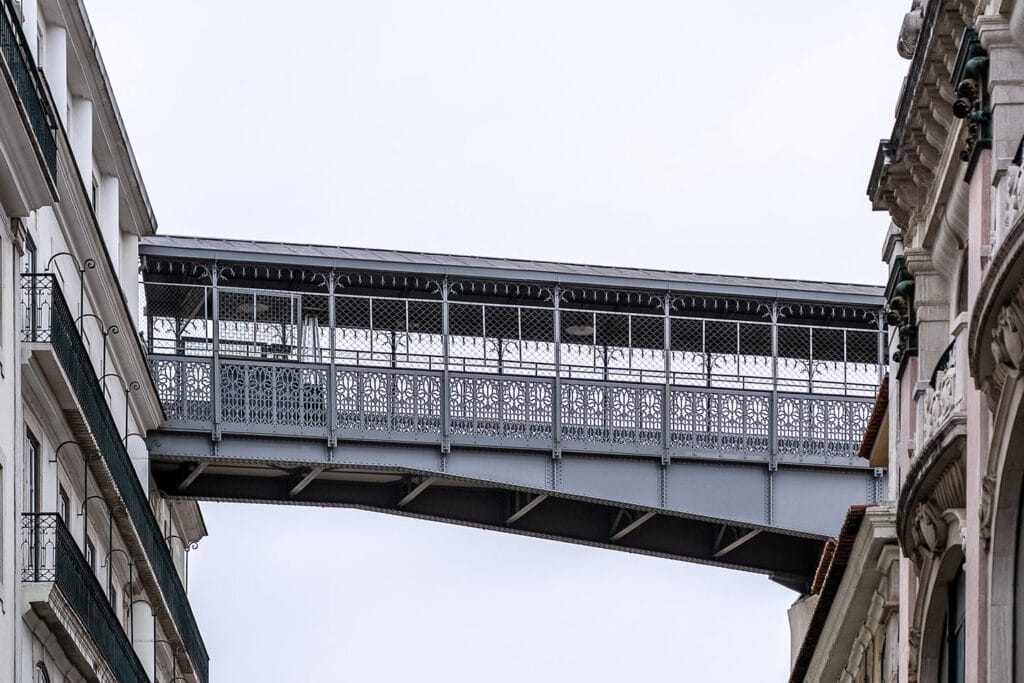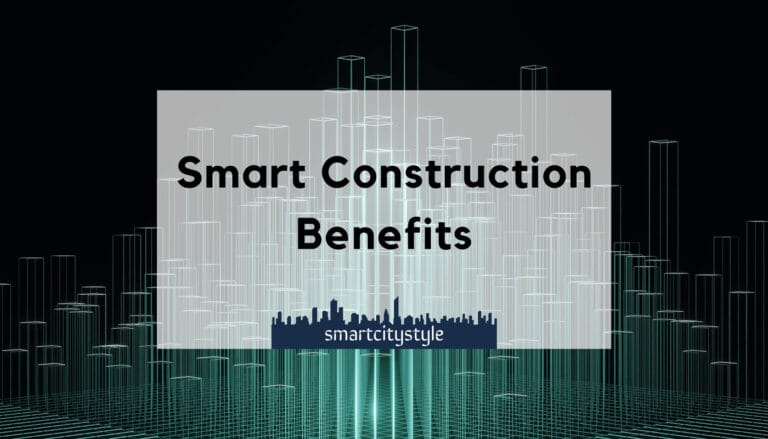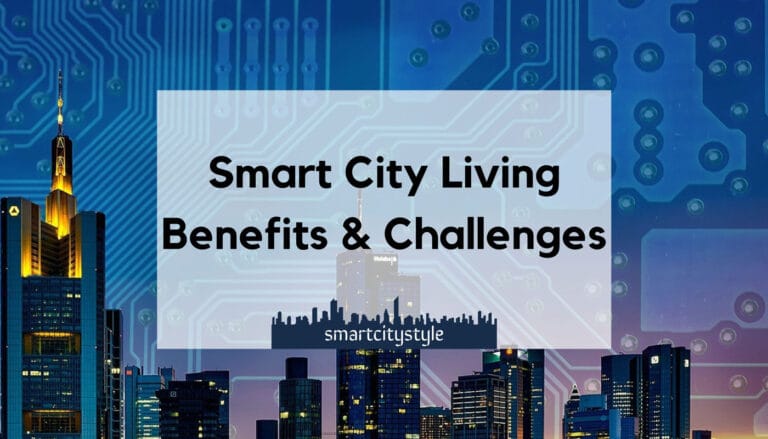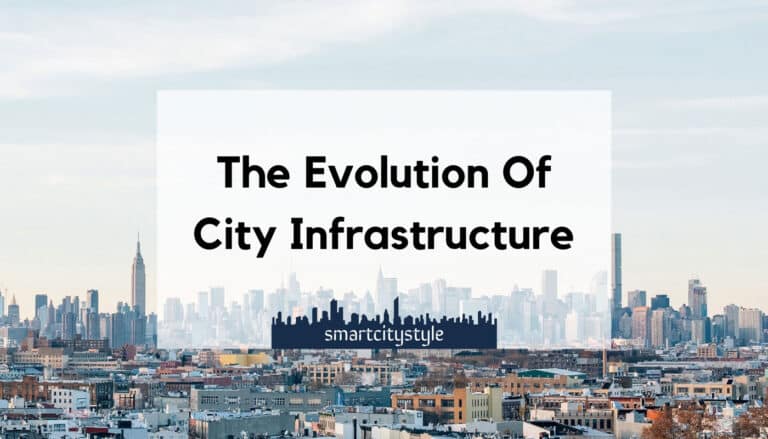City of Tomorrow – What Will Urban Living Look and Feel Like
Technology plays a significant role in the development of urban areas, from New York City across the United States to European cities, the Middle East, and Asia; a well-planned urban space is essential to creating sustainable cities that are eco-friendly and cost-effective.
As many smart cities continue to evolve, several projects on the rise throughout North America and globally will shape the future of digital living for tomorrow. What can we expect from smart cities of the future?
The City of Tomorrow: What Will It Look Like?
Sustainable urban development will take various forms in different urban spaces based. Smart cities of the future will all look different, depending on the city’s needs, neighborhoods, roads, open spaces, and unique structural architecture and designs, but they will likely have many features in common.
Bridges and Connecting Points
As many urban centers focus on developing skyrises and connecting existing infrastructures and urban spaces, there will be a greater need for bridges and similar connections between buildings, such as walkways and corridors.

Skybridges are already common in some large cities. They provide a convenient, climate-controlled passage leading from one building or space to another. These enclosed paths connect offices, condominiums, restaurants, shopping, attractions, entertainment, and transportation hubs, making it easy to get where you need to go on foot without stepping outside.
Elevators, pedestrian walkways, and underground tunnels in mixed-use areas will help maintain connections between major buildings and areas within a city’s core and business centers built in specific areas outside of the downtown or in a newly developed space.
An example of an efficient new way to move people within and in between buildings is the Multi elevator system, the first rope-free elevator that moves side to side, in addition to up and down, for greater mobility.

Additional bridges for transportation will also be required to accommodate growing populations and expansive transit systems to keep up with the demand of commuters.
Underground Tunnel Systems
The city of tomorrow will likely begin heading underground. The future of urban development will include underground highways, walkways, and tunnel systems to maintain flood control and keep traffic and pedestrian flow consistent during sudden changes in weather and contributing factors.
These tunnels will include both underground and above-ground structures, such as hyperloop transportation, which has already been proposed in many cities worldwide. It’s a great alternative to traditional travel, as it helps address climate change and would transport passengers and cargo quickly and safely within minutes between cities.
Building Underground Structures
As millions of inhabitants increase in the 21st century, urban areas will have less space above ground, and underground buildings will provide less expensive construction solutions. Subterranean construction offers a remarkable range of benefits.
It provides a stable temperature, remains unaffected by weather, snow, and natural disasters, and offers a resilient urban space for transportation that doesn’t require high energy costs.

Building down in smart cities eliminates the need for foundations, a significant departure from traditional buildings. Underground construction offers unlimited opportunities for just about any application you can think of, including business spaces, warehouses, bus terminals, utility plants, and below-street-level pedestrian paths.
Singapore and Helsinki have expanded their infrastructure to include underground developments, including shopping centers, swimming pools, and data centers. Underground developments keep skylines low, focusing on cost efficiency and sustainability.
Greater Focus on People and Connections
The future of urban living and smart cities will focus more on residents, with delivery drones, zero-emission transportation, e-governance, and digital administration. These make it easier for citizens to maintain accurate updates of their address and driver’s license or find openings for daycare or preschool.
The future of urban sprawl will require greater convenience for a growing population, with improved networks for cars, buildings, and public transit, smart grids for smart energy, and healthcare administration and treatment.

A successful smart city will integrate artificial intelligence, IoT technology, and machine learning, transforming to meet the needs of communities, government, businesses, and individual citizens.
As these static areas are developed with powerful computers and technology, they provide a cost-effective platform for future improvements. Innovation must be made accessible for people to adopt so that citizens can benefit from a better quality of life and the convenient features of smart technology.
The Challenges and Benefits of Implementing Smart Urban Living
As city planners consider the rising cost of urban living, the need to reduce CO2 emissions, improve air quality, and better access to fresh water and efficient waste management become essential.
Smart city systems help reduce national emissions and lower the carbon footprint of urban spaces. They also improve traffic flow and accommodate the growth of urbanization, which consistently increases worldwide.

As the cost and urban planning can be initially challenging, the future benefits of smart cities greatly outweigh the drawbacks. There are a number of pros and cons to consider, when reviewing the structure of digital cities.
Advantages
- Digital cities are cost-effecitve and sustainable
- They provide essential services to citizens within a fraction of the time and effort.
- Smart cities provide a platform for 5G communication and further advancements in the future.
- Just-in-time waste collection, and reducing volumes of accumulated trash (installing smart trash bins around the city), which is a common issue in many urban areas.
- Smart street lighting, parking systems, and implementing road surcharges to reduce highway congestion and maintain a steady flow of traffic.
- Reduction in water usage with smart meters and digital monitoring.
- Smart retail shopping that automatically scans carts and contents to bill customers as they leave the store.
Disadvantages
- There are significant upfront costs associated with implementing smart city technology, and developing strategies.
- Possible challenges in adapting current infrastructure to fit smart technology.
- The future of urban living may seem uncertain to citizens initially, especially in regions with high urban sprawl and a growing population.
Final Thoughts
The future of urban living is taking root in many urban spaces today. As more cities around the world build a framework for digital systems, there is significant potential to create many innovative IoT devices and technology, which improves the infrastructure for future development and expansion.
Inspired? Pin it!






